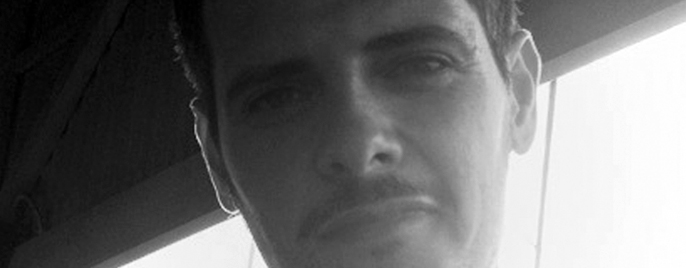Life in Movement celebrates the short life of Tanja Liedtke. How did you balance the emotional story while revealing her creativity?
I think when we approached this film there was a fear that because we knew Tanja so well the film would fall into being an overly emotional account of our dead friend. Of course we never intended it to be such and I think we worked consciously in the edit to find a balance. As for revealing Tanja’s creativity, well that oozed from the very fiber of her being so we decided to focus on her life as a creator of movement and her rigorous work ethic. I think we really tried to consider this film for an audience who knew nothing about Tanja and nothing about contemporary dance. That was the starting point, the challenge.
How did you knit the story together using tour footage, private videos, rehearsal process and interviews?
There are many textures and layers in this film. Shortly after Tanja died we decided to make this film, although at the time we were unaware of what the final product would be exactly. So we started the first round of interviews a few weeks after the accident, and about two months after that Sol (Solon Ulbrich, Tanja’s partner in life and work) flew down to the edit suite with a box of 90+ DV tapes, Tanjas personal archive. That was a gift, trawling that footage gave us so many shining moments and connections to work with in the edit. For a long time we just worked with interviews and the archive, then 18 months after the accident Tanja’s dancers and Sol decided to take Tanja’s two full length shows on a world tour, so that was the opportunity we were looking for to give the film a current storyline and structure.
You are Director/Co-Producer/Cinematographer/Editor. Did this strengthen or hinder the edit process?
Ha, a little from column A and a little from column B. Sophie Hyde (producer, co-director) and I work very much in a close knit way, we enjoy it, sharing all the creative roles on a documentary is not uncommon for us. Also, it’s a very personal film and I don’t think it’s necessary to avoid that in a documentary. Being closely connected and working through it all is what made us find this story. Also, ultimately the budget of this production was very low, and came through slowly over the production period, so by the time we had cobbled together a decent budget we had shot half of the world tour, all the lead up interviews, edited a promo, combed the 90+ hour archive and started to assemble the film. So it seemed to make sense to just keep going. I am quite sure we would have ended up with quite a different film if we had worked in a more traditional manner.
Did you stretch the boundaries of how to tell the story in the edit?
Tanja was a rigorous artist, she worked hard, she pushed hard and was well known for her very detailed and yet accessible work. So I felt that the bar was set pretty high when it came to making a film about her. So did we push it? Yes, we used everything available to tell a story and to present an audience the truth we felt we discovered while making the film. There is one particular strand of the story which is never really talked about, but is very present throughout the film, its only shown and explored visually and that ends up having quite a resonance. I certainly don’t think we did anything revolutionary with this film, don’t get me wrong, but there is a lot of time and love on the screen.
What is your favourite experience?
In a lot of ways this is a tiny film, mostly just Sophie, myself and the camera out shooting and then either just myself or the two of us in the edit suite for long stretches. So to have such a personal film travel well, be embraced by audiences, and rewarded by our peers and then get a theatrical release has all been amazing, far beyond expectation. But the most satisfying part of this film was getting to meet and interview so many of the people in Tanja’s life. Sharing their stories, their experiences and then crafting a film about it all, what a privilege.
(July 2012)
